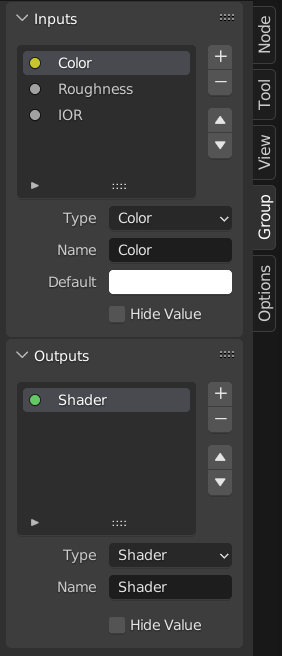

Prior to Grafana 6.0, plugins were written in AngularJS. Since Grafana 6.x, panels are ReactJS components. Specifically, module.ts needs to expose an object that extends GrafanaPlugin, and can be any of the following:

module.ts exposes the implementation of your plugin, which depends on the type of plugin you’re building. module.tsĪfter discovering your plugin, Grafana loads the module.ts file, the entrypoint for your plugin.

To see all the available configuration settings for the plugin.json, refer to the plugin.json Schema. Sign up for a Grafana account to claim your username.
#ADDON FOR GROUP COLOR UI INSTALL#
If you don’t want to install Grafana on your local machine, you can use Docker. Restart Grafana if it’s already running, to load the new configuration. Refer to the Grafana configuration documentation for more information. To discover plugins, Grafana scans a plugin directory, the location of which depends on your operating system.Ĭreate a directory called grafana-plugins in your preferred workspace.įind the plugins property in the Grafana configuration file and set the plugins property to the path of your grafana-plugins directory. What makes the tool especially unique is the ability to test a range of colors rather than just two at a time.Before you can get started building plugins, you need to set up your environment for plugin development. Accessible Color Matrix makes it super easy to test out potential color schemes for your user interfaces. Ensuring your UI’s color contrasts are in line with the Web Content Accessibility Guidelines ( WCAG) is one of the ways you can do this. When it comes to product design, we should all be keeping accessibility in mind. Below are a handful of UI color picking tools we recommend that will help ensure the effectiveness of your designs and of course, keep them looking nice and polished! 1.

It’s no surprise that color is one of the most essential foundations for a digital product’s design language, so it’s crucial that you choose your color palette with intention. This means carefully considering color semantics and ensuring designs are accessible, all while remaining on-brand. Not only does UI design require a comprehensive set of colors with a range of variations and shades - but designers also need to think about how color will add to the user experience of a digital product. It’s important to keep in mind that choosing colors for user interfaces calls for a different set of requirements than for example, a graphic design project. While there are plenty of fantastic color palette generators available on the web, in this post, we thought we’d share our favorite color tools specific to UI design.


 0 kommentar(er)
0 kommentar(er)
